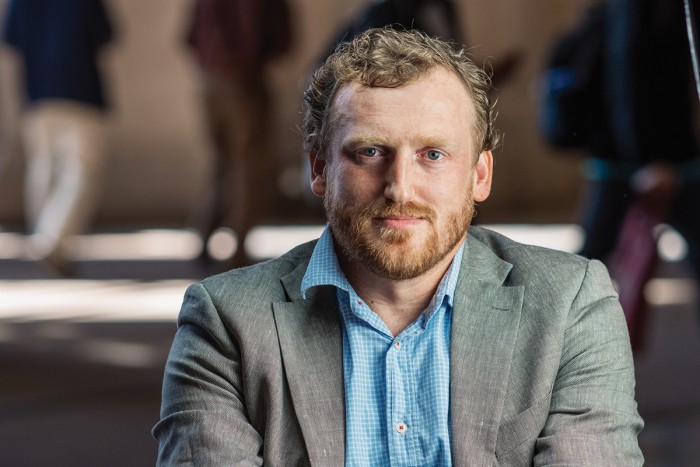Educating the Displaced
When I was a teenager in 1992 in Bosnia and Herzegovina, war broke out and changed everything. Our community was devastated and our lives were in danger, so my family and I relocated to a refugee camp in Croatia. It was hard leaving everything behind and eking out an existence day to day. But the most difficult thing was feeling I was different and did not belong in this new world.
I remember talking with pride to a grocer in a nearby city about how I had earned top grades in my hometown. He gave me a long look, then told me dismissively that I would be considered only average in this community and should not set my expectations too high. I can still feel how those words stung me.

When fall arrived, my mother took me into the city to look for a high school to attend. At the first school we found—a technical high school—the administrator told us the law prevented refugees from enrolling in public school. My mother broke down in tears. This good man then relented, allowing me to attend as a nonmatriculating student. I chose to study chemistry, because my hometown had an oil refinery and I thought, “Someday I will return and get a job there.”
I studied very hard, and the following spring, I entered and won the city’s top chemistry competition. I practically floated up to the stage to accept my award.
Later, I brought a newspaper article reporting the award to the grocer to show him what I had accomplished. I didn’t realize it at the time, but that feeling of validation set me on my life’s course.
The next year, my family moved to Germany. I stayed behind, with the support of friends and Italian volunteers we met in camp, to continue my studies. After completing school, I eventually was approved to receive a diploma, which opened more doors for higher education through generous sponsors who saw my potential.
I became fascinated with using chemistry and physics to uncover hidden secrets of nature and ancient societies to create new, more sustainable materials. A decade ago, I cofounded Adamantio, an Italian company devoted to preserving valuable ancient treasures. While leading Adamantio, I earned my doctorate in physical chemistry at the University of Turin, where I developed diagnostic tools to assess the properties of the Dead Sea Scrolls and other ancient manuscripts. After moving to Germany and working on biological materials at the Max Planck Institute, I was offered a job to develop new surgical tools at a renowned European hospital. But my heart was pushing me toward teaching.
Today, I can hardly believe I am an assistant professor of civil and environmental engineering at MIT. This summer I took 10 MIT undergraduates to Rome, Pompeii, and Turin, Italy, for two weeks to study ancient ruins for engineering insights. Our interdisciplinary research—which combined Course 1 with materials, archeology, and architecture—provided critical on-location experience that will help the students with classroom and lab work in a new class I’m teaching this fall.
I feel very fortunate, but never far from my mind are the other refugees—past and present—who did not receive a helping hand. To support displaced youth, I’ve been working with the MIT Solve CoLab community to solicit ideas for improving learning in refugee camps through a Solve challenge. In addition to helping refugees prove their knowledge and skills to authorities who question their abilities and potential, we ultimately hope to provide customized online education for them, drawing on many of MIT’s strengths.
I know firsthand that a good education is the ticket to a better life. My years living as a refugee also made me realize that knowledge is something no one can ever take from me. My life could have gone in any direction, but with a little help from generous people and a belief in myself, I was able to persevere and flourish.
If I can help students find new ways of seeing things while fulfilling their dreams, then I will know my life has meaning. It’s important to give all students—regardless of background—opportunities to learn and apply their talents to build a better world.
Admir Masic is the Esther and Harold E. Edgerton Career Development Professor in Civil and Environmental Engineering.
Keep Reading
Most Popular
Large language models can do jaw-dropping things. But nobody knows exactly why.
And that's a problem. Figuring it out is one of the biggest scientific puzzles of our time and a crucial step towards controlling more powerful future models.
The problem with plug-in hybrids? Their drivers.
Plug-in hybrids are often sold as a transition to EVs, but new data from Europe shows we’re still underestimating the emissions they produce.
How scientists traced a mysterious covid case back to six toilets
When wastewater surveillance turns into a hunt for a single infected individual, the ethics get tricky.
Google DeepMind’s new generative model makes Super Mario–like games from scratch
Genie learns how to control games by watching hours and hours of video. It could help train next-gen robots too.
Stay connected
Get the latest updates from
MIT Technology Review
Discover special offers, top stories, upcoming events, and more.